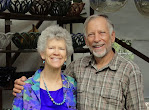We jump right in
We arrive in Puno on Thursday, January 12, and after an afternoon and night for rest and altitude adjustment, we are off buying a solar panel, 65watt for the trade we had arranged for last year with Olga, a single mother who makes less than a dollar a day.
We visit the family of Gonzalo, staying in Puno these weeks to care for Jenfer and her prematurely born baby boy. The baby is in the hospital in an incubator. The doctors recommend the neo-natal unit in Lima but the logistics of living in that hot costal city, where they would have no real family suppport, are prohibitive. A week later, they are able to bring the baby to Taquile where both mother and baby seem to be thriving. We give the beauiful crocheted yellow baby blanket made by my mother, Irene Miller, to this baby. So far his name is "Junior." Jenfer´s husband, Alex, is bright and cheerful. We are glad for this happy couple to be together.
 |
| Rose petals are part of the curandero healing process |
Irene´s other blanket was received by our goddaughter, Natalia, whose baby girl, Leyda, was born September 25. Natalia´s husband, German (in English, pronouce it like Herman), is a loving father and a talented man. In our solar installations, he has been the most skilled electrical worker; he was installing mosaic tile for a restaurant upgrade on the other side of the island this first week of our visit.
We bring gifts for various godparents and penpals from the US. Kusi and her siblings are thrilled with their gifts from Luke and Ellen of Gunnison, Colorado.
Lizbet is pretty happy with gifts from her penpal, Morgan, in the land of maple sugar and moose. The simple wind-up toys were a hit for awhile, animated with stories and accessories of leaves and flowers.
We also bring gifts of money for several families, from godparents and supportive friends and family in the US. I don´t have permission to name all the donors (though I will be pleased to list you when I have that permission), thank you, thank you. $100 goes a long way here, and can make a huge difference.
We catch a cargo boat from Puno at 6:00am with all our luggage and a load a bricks that we helped load onto the boat the night before (and helped unload onto the Taquile dock). The lake was rough and one pile of bricks toppled; luckily no one was hurt. I spoke up with my kiln-building brick expertise and tied in the stack by overlapping courses.
Next day, Sam helped carry the bricks up to German´s building site. He and Eufrasia could carry 5 at a time: some of the guys carried as many as 8. Stay tuned for a post about construction projects.

























